



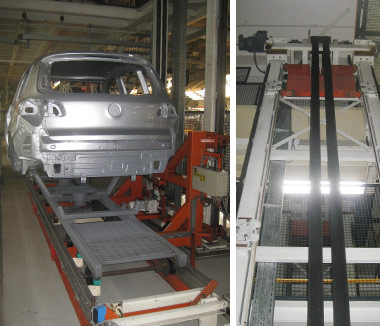
(PSI Technics, 9/2013)
Innovative techniques helped determine various optimization approaches for a vertical material lift used in the automotive industry. An ideal optimization scenario was assumed to minimize energy consumption and include time-optimized trajectories that would not affect throughput, while keeping mechanical stresses to a minimum. Since the vertical material lift combines mechanical, electrical and PLC control engineering with closely interacting core components, the entire system had to be taken into account. Motion analysis was used to determine the system's current motion profile, which provided a basis for determining optimization potentials. All existing loading conditions and motion sequences were simulated in a virtual model using finite element methods (FEM), multi-body models and controller modeling. The results were verified against the actual operation of the system and illustrated the benefits of using an intelligent positioning controller.
The primary objective of the analysis was to reveal and demonstrate optimization potentials as well as approaches and solutions for harnessing those potentials. PSI Technics used motion analysis and virtual modeling for the analysis. Both methods support the design of automated industrial vehicles and conveyor systems with regard to modernizations and new installations.
The analysis was performed for a vertical material lift used in the Volkswagen AG factory in Wolfsburg, Germany. The system transports car parts and vehicle bodies to and from different floors of a body painting workshop. The parts are delivered and retrieved in a particular order, from the highest to the lowest workshop level. The unloaded system then travels back to its starting position. The system's motion sequences are controlled by a PLC. No positioning controller is used. The material lift reaches the individual loading and unloading positions at creeping speed and is stopped using proximity switches. Only the frequency converter drive has a speed control. Thus, the system is a typical vertical material lifting system commonly used in this industry.
The first step consisted of a motion analysis to determine the following aspects and to enable virtual modeling that would reveal initial optimization potentials:


The motion analysis was based on individual, particularly relevant conditions, such as frequently recurring loading conditions and/or loading conditions likely to cause a high amount of mechanical stress (Table 1). To enable a comparison between the current system and a system equipped with a positioning controller, two additional loading conditions that are specific to positioning control were required (Table 2).
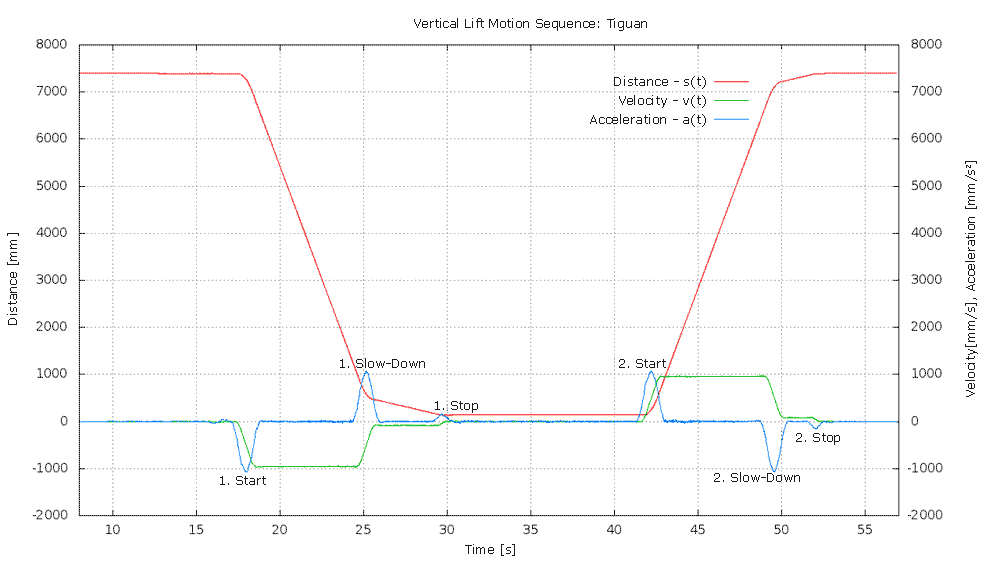
During the motion analysis, the system's travel profiles were recorded using a high-resolution optical distance meter and evaluated. The results of the motion sequence analysis are shown in Figure 2.
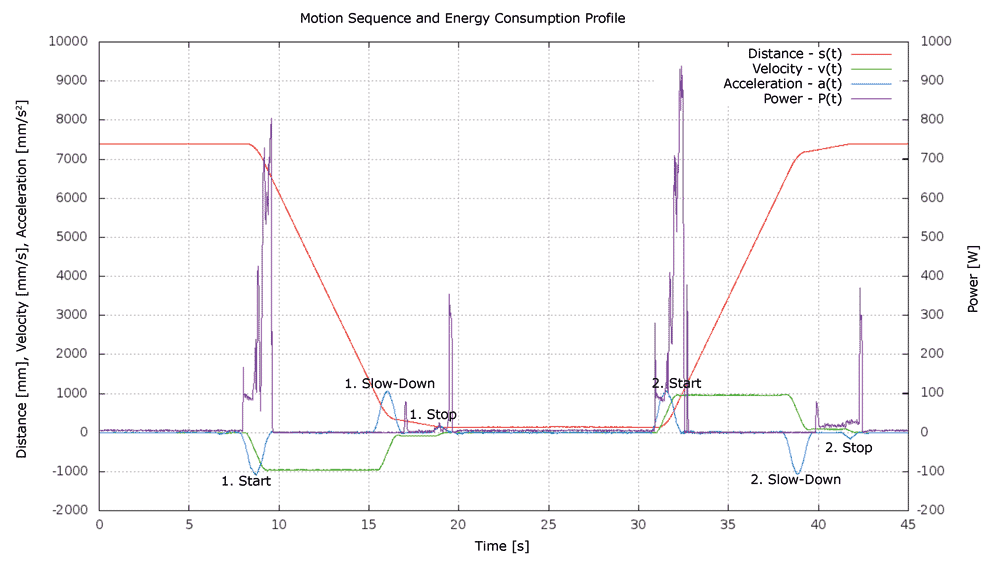
During this analysis, the system's energy consumption was measured and evaluated for different loading conditions using an Accura 100 Nicolet S oscilloscope, a Chavix Arnoux clamp meter, a Contac 900 differential probe and the Flexpro analysis software v6.0.33. A total of 17 measurements, each lasting approximately 50 seconds, were performed to enable a qualified assessment of the energy consumption. The results are shown in Figure 3.
Virtual modeling uses mathematical models to create a virtual representation of existing factory logistics systems. Within certain limits these models simulate the operation of an existing logistics system. By using virtual modeling for designing controllers while simultaneously taking into account mechanical stresses, PSI Technics is able to obtain a very accurate representation of the actual system behavior. Virtual modeling has the crucial advantage of enabling a comparison between various system configurations in terms of mechanics, electronics, and open-loop or closed-loop control. Consequently, the stresses that are characteristic to a PLC-controlled system could be compared to those occurring in a system with closed-loop control.
To ensure a highly accurate mathematical representation of the existing vertical material lift, the entire system was divided into several sub-systems based on its individual components. The virtual modeling process essentially took place in several steps:
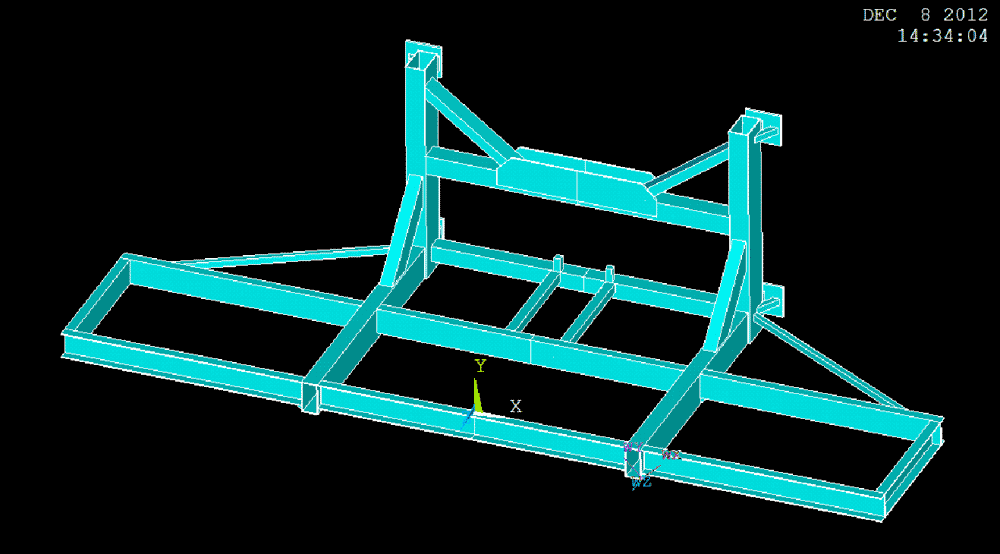
1. Finite Elements:
2. Multi-body model:

3. Closed-loop controller model:
The project was set up to enable a co-simulation between the multi-body model and the controller model following the creation of the virtual model.
For verification purposes, the data obtained during virtual modeling were verified against the operation of the system at run-time. Strain gauges were placed at relevant measurement positions on the vertical material lift. The strain gauge positions had previously been determined using static and dynamic finite element calculations. In addition, motion analyzing technology was used to measure the system’s mechanical stresses as well as the system kinetics.
Using motion analysis and virtual modeling, PSI Technics was able to provide the factory operator with comprehensive data for an optimized operation of the vertical material lift. The results obtained from the mathematical models were verified by placing strain gauges at the material lifting system at run-time. The verification data underlined the benefits of using a positioning controller.
Virtual modeling revealed significant potential improvements with regard to
Creeping speed can be completely eliminated and cycle times can be reduced by 5% by using a positioning controller. In addition, cycle times can be dynamically adapted to match the production process. Buffer zones can be reduced to ensure that the transported material is available just in time, at all times.
The elimination of creeping speed and shorter cycle times will reduce the system's energy consumption for each duty cycle. The system can be fitted with modern and highly efficient drive technology to enable energy recovery. Based on the load cycles of the modeled system, energy savings of 354% are possible. The same applies to CO2 emissions: The CO2 emissions for every single material lift can be reduced by 1894.2 lbs. (859.2 kg) per year.
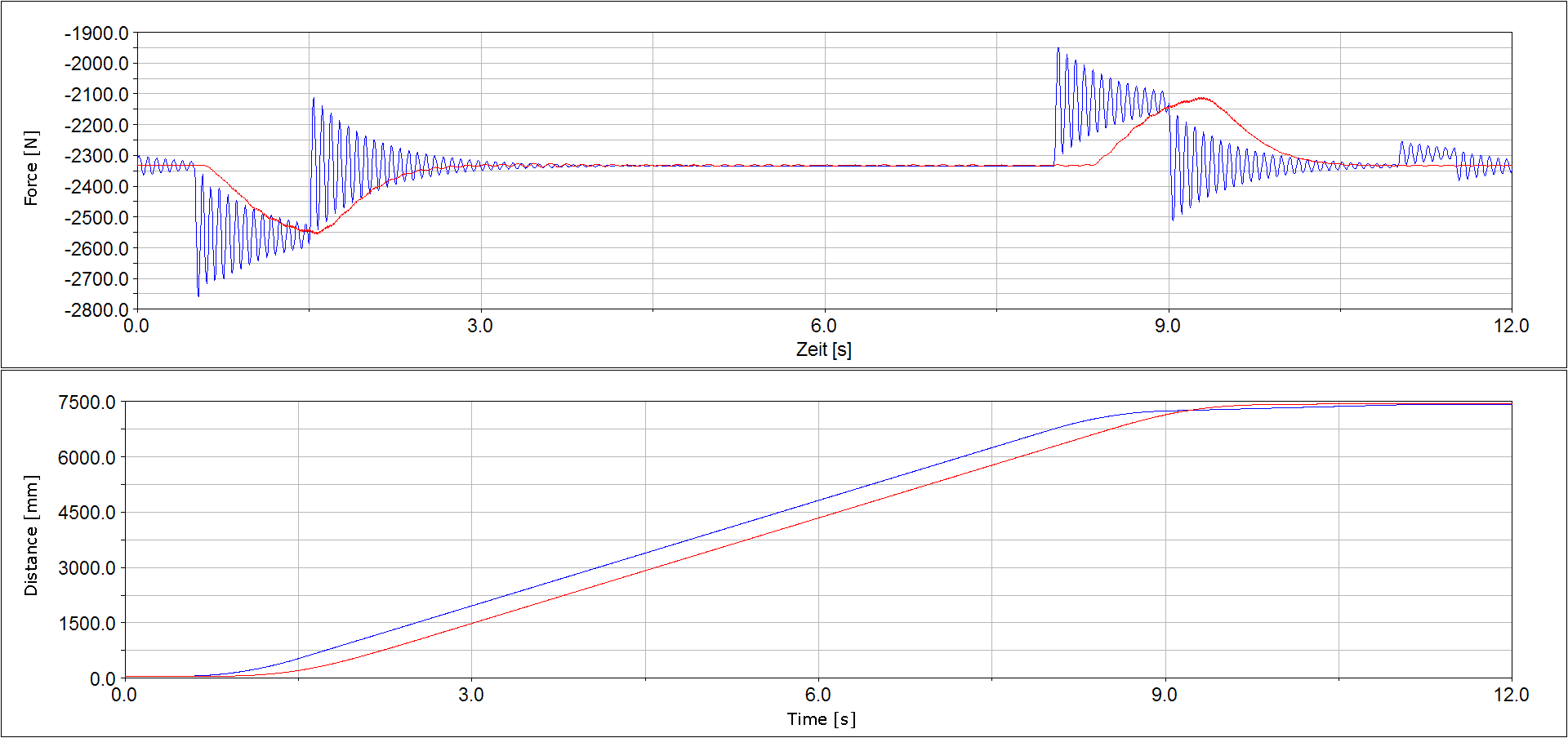
Positioning control, improved drive technology and improvements to the loading and retrieval cycles will reduce peak mechanical stresses by approximately 10% (Figure 6). Moreover, oscillations would be significantly reduced, considerably relieving stress on individual system components which results in lower maintenance and an increased lifespan.
The results were used as a basis for creating a factory standard for the retrofitting of similar material lifts. The factory operator already advised the planned retrofitting of the first system. Moreover, the motion analysis and the virtual modeling approach will be used for future planning and for the design and implementation of new systems.
Contact:
PSI Technics
Karl-Heinz Förderer
President and CEO
Phone: +49 (0) 2630 91590-0
E-Mail: info@psi-technics.com
ARATEC® TPCC® - Registered in U.S. Patent and Trademark Office
Understand. Challenge the status quo. Consistently move forward: This is our vision of progress. We are advancing digitalization and we are leveraging existing data to create added value for our customers.
AUTOMATE. OPTIMIZE. INCREASE QUALITY. SAVE ENERGY.
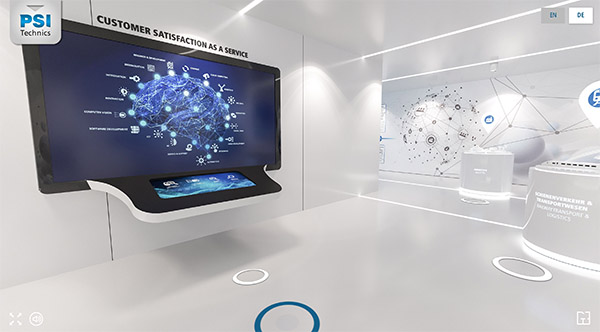

Immerse yourself in the world of PSI Technics, the competence center for digitalization and automation. We accompany your technical and industrial processes into the future.
You can also use our contact form to make an appointment for an individually guided tour. Click here to visit our digital showroom
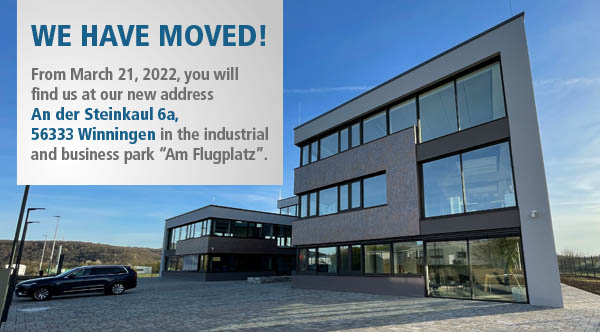

From March 21, 2022, you will find us at our new address An der Steinkaul 6a, 56333 Winningen in the industrial and business park "Am Flugplatz". Watch the highlights of the new company building
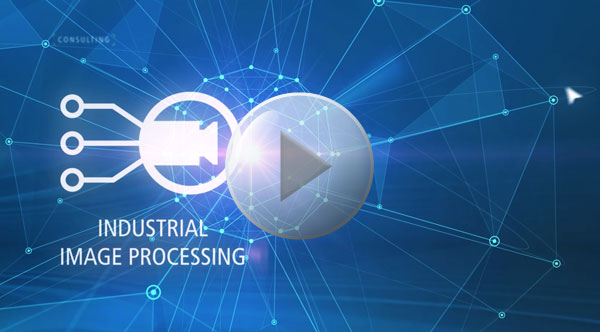

As image processing experts, we develop custom system solutions for challenging processes, e. g. for the Food Industry - Watch movie for Railway Transport and Logistics - Watch movie for the Automotive Industry - Watch movie for the Raw Materials / Commodities Industry - Watch movie
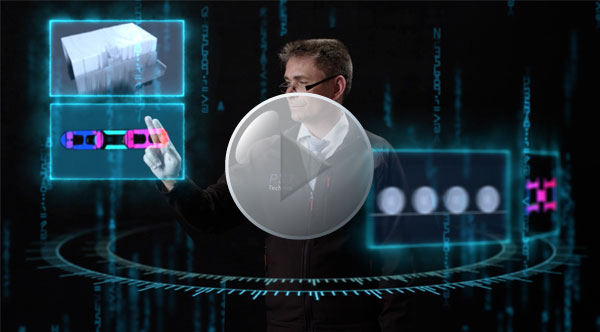

Designed for the continuous monitoring and visual quality control of production processes.
PSI Technics offers easy-to-use, application-specific digital image processing solutions that are designed for the continuous monitoring and quality control of production processes. Nearly all monitoring and measuring tasks can be automated by means of industrial image processing. Watch movie
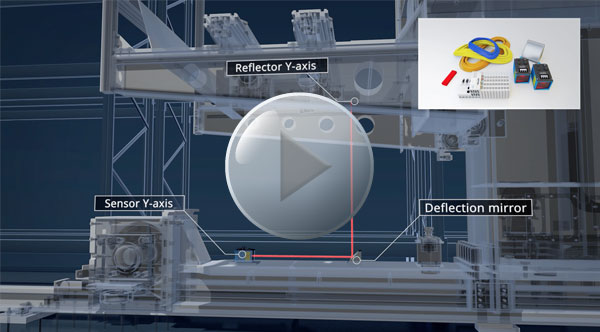

PSI Technics' ARATEC Positioning Solution System is an innovative solution for industrial positioning applications.Watch movie


We invite you to experience a completely new type of control technology – in an entertaining short story. A clear and straightforward presentation will show you why the ARATEC is the best positioning solution on the market: For STACKER CRANE applicationsFor BRIDGE CRANE applications
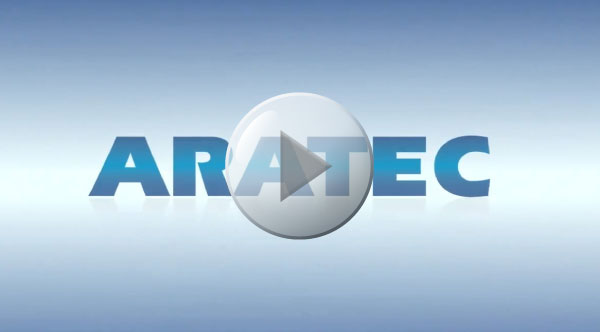

PSI Technics' ARATEC Positioning Solution System is an innovative and advanced solution for industrial positioning applications. Watch movie
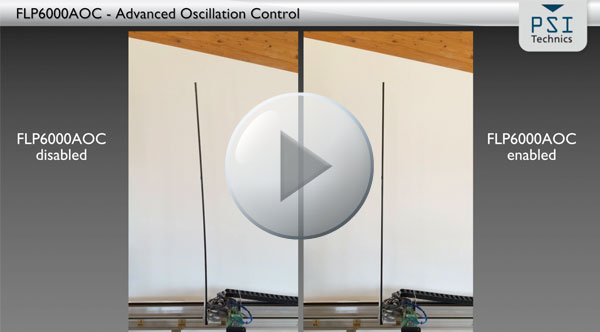

The ARATEC's FLP6000AOC software reduces mast oscillations – even of highly dynamic stacker cranes – to a minimum. The test setup shows that the ARATEC Positioning Solution System with enabled FLP6000AOC compensates for mast oscillations in near-real time, even when the oscillations are caused by external disturbances.
You've got questions, requests or comments about our products and services? Contact our service team and receive a non-binding consultation.
PSI Technics GmbH
An der Steinkaul 6a
56333 Winningen | Germany
PHONE +49 (0) 2630 91590-0
FAX +49 (0) 2630 91590-99
info@psi-technics.com